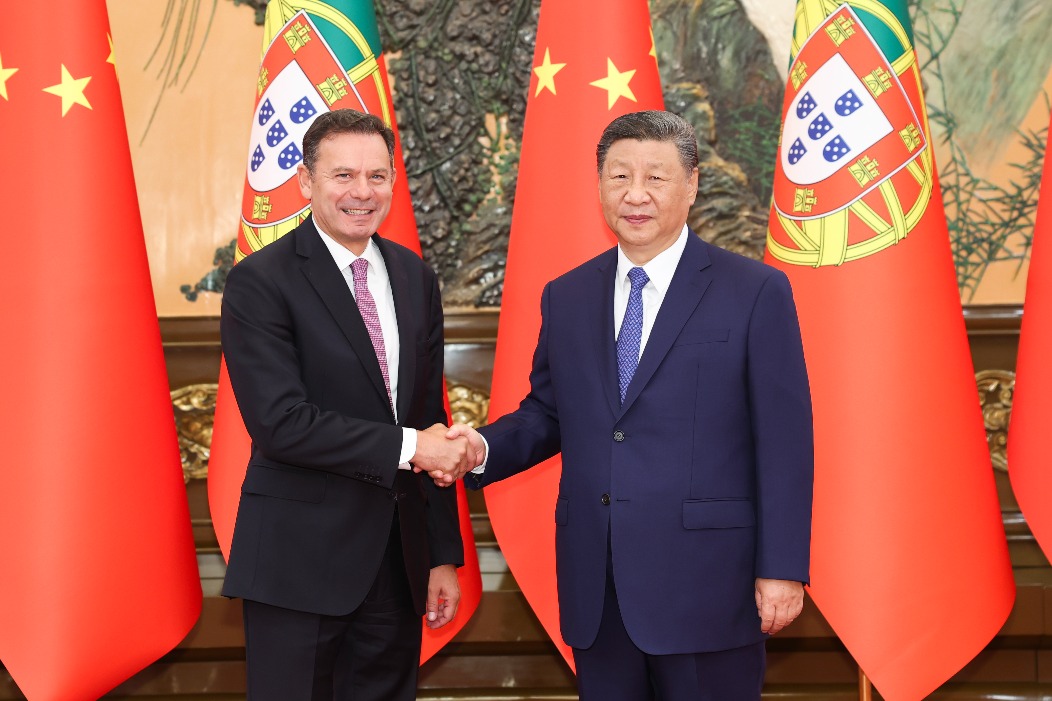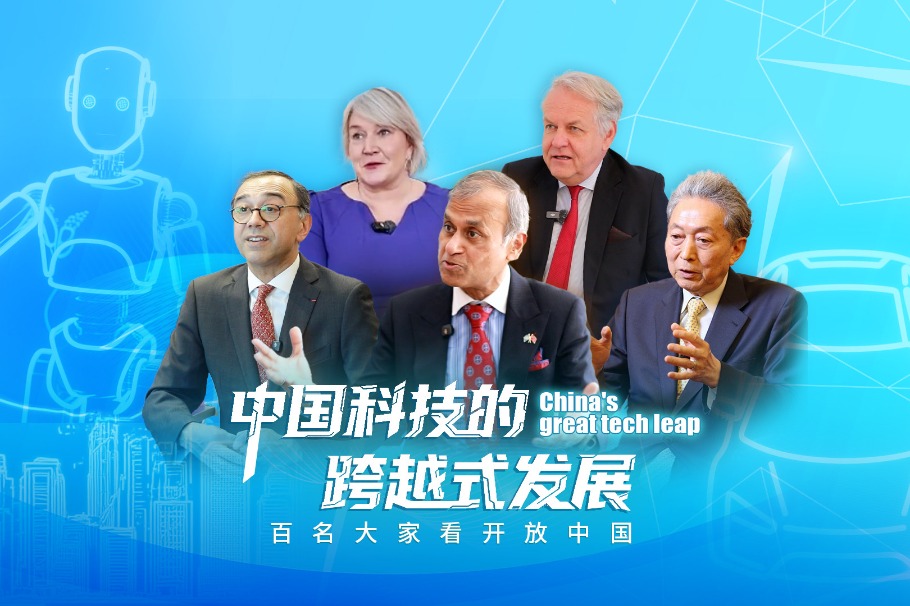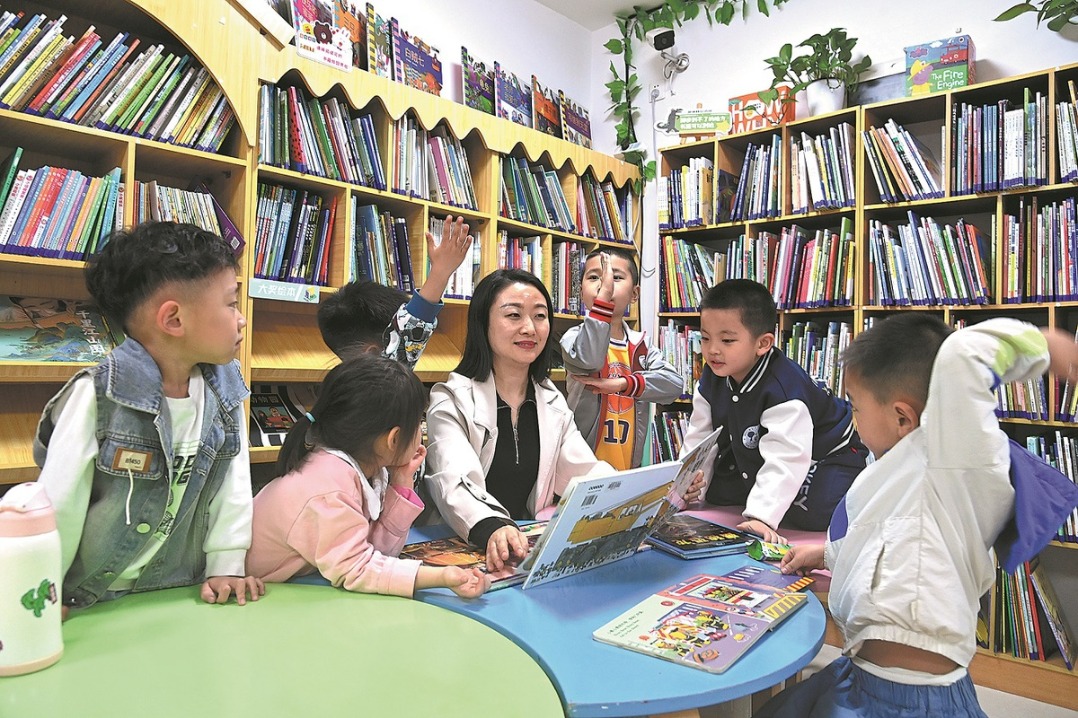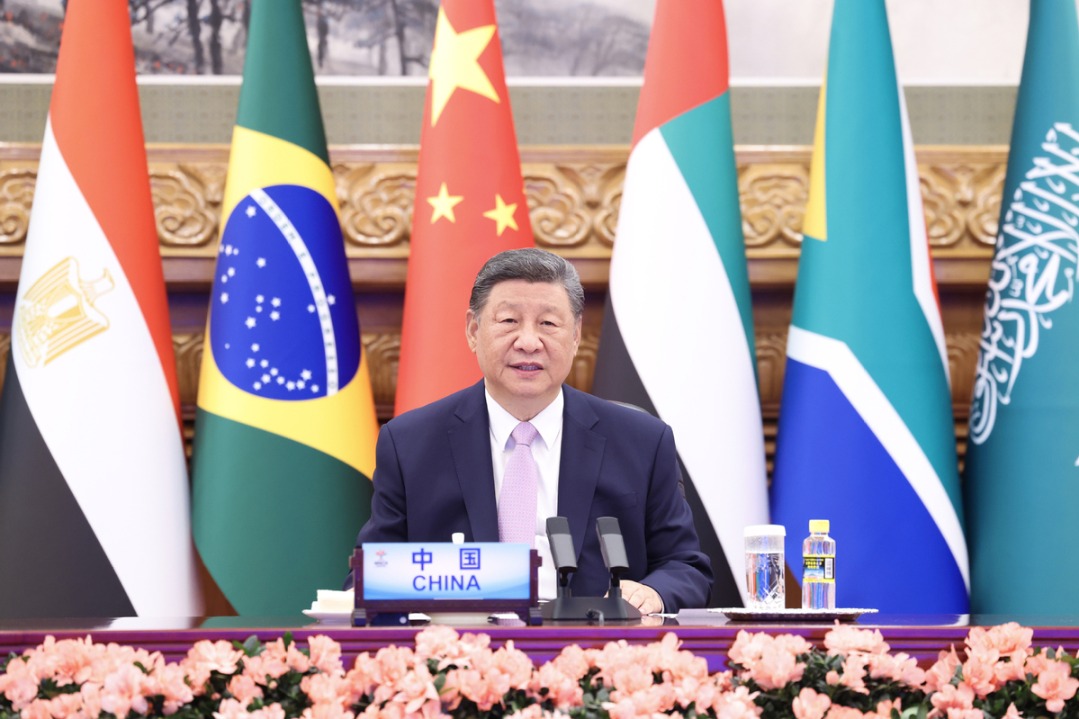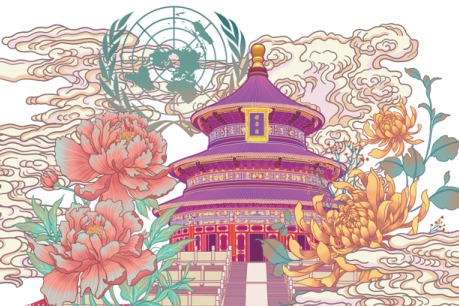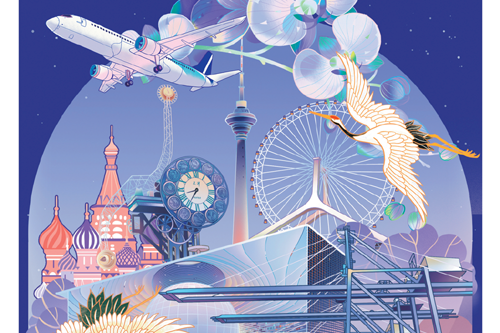Development for peace


China's answer to the challenges the world faces today conforms to the trend of the times
What's wrong with the world? What should we do? These are questions frequently heard. As the largest developing country in the world and the most important nation in promoting the change of the international landscape, China's answer naturally attracts special attention. For China, the key word is development. Peace and prosperity can be promoted through development, and China is contributing to world peace and development through its own development.
China's emphasis on development stems from its own experience of reform and opening-up. By establishing an overall national strategy of opening to the outside world and domestic reforms, China has accomplished in a few decades the development course that developed countries took several centuries to complete. Its total economic volume has ranked the second in the world, nearly 1.4 billion people have been freed from material scarcity, and a moderately prosperous society has been built in all respects. Along with this development process, China's internal and external environments have experienced peace and stability in modern times. It is based on this experience that China has gradually developed its theory of Development for Peace, despite the suspicions and concerns expressed by the outside world over its growing strength and influence. President Xi Jinping has repeatedly stressed: "Development is the key to solving all problems." China is committed to promoting world peace and prosperity through its own development, contributing to global development and safeguarding the international order.
The essence of China's theory of Development for Peace is promoting peace through development. Development fundamentally solves the root causes of war, conflict and turmoil, such as poverty and weak governance. The theory includes a new view of state relations based on partnership rather than alliance. It moves beyond the traditional paradigm of coalitions between two parties to oppose and restrain a third in favor of open, mutually beneficial and win-win cooperation. It adheres to multilateralism and the principle of mutual consultation rather than unilateralism, and rejects protectionism in favor of building shared interests, and promoting win-win cooperation to achieve common development rather than a "winner-takes-all "approach. It is a vision of common, comprehensive, cooperative and sustainable security, which respects and safeguards the security of every country, and does not pursue so-called absolute security at the expense of the security of others. It upholds inclusiveness, exchanges and mutual learning among civilizations, and respects the diversity of civilizations and regards differences as a driving force for development rather than a cause of conflicts. It replaces estrangement with exchanges, replaces conflict with mutual learning and replaces superiority with coexistence.
The Belt and Road Initiative is both an action plan and an important platform for China to implement its theory of Development for Peace. As of January 2021, China had signed 205 documents on cooperation within the Belt and Road Initiative framework with a total of 171 countries and international organizations, which shows that the initiative, which focuses on development and peace, has been widely recognized and is being actively participated in by the international community.
In particular, in the face of the huge impact of the COVID-19 pandemic on the political, economic and social fields, the international landscape has become more volatile and uncertain, but China's determination and sincerity to promote international cooperation has not changed. China has provided anti-pandemic assistance to more than 150 countries and 10 international organizations despite the intense pressure it has been under, and has sent 36 medical expert teams to 34 countries in need. At the same time, China has given full play to its advantage of the largest capacity of medical supplies to export more than 220 billion face masks, 2.25 billion units of protective clothing and 1.02 billion test kits, thus providing strong material support for countries along the Belt and Road routes to fight against the pandemic. It has also taken the lead in resuming production. Its foreign trade industry chain and supply chain are gradually getting back on track, and China has become a stable anchor of the global industrial chain and supply chain. In 2020, China's imports and exports to countries participating in the Belt and Road Initiative totaled 9.37 trillion yuan ($1.5 trillion), up 1 percent year-on-year. From January to November of the same year, China's non-financial direct investment in the Belt and Road countries was $15.96 billion, with a year-on-year increase of 24.9 percent. The Belt and Road Initiative has become a healthy means for China and participating countries to fight against the pandemic and to develop together.
As an ancient Chinese saying goes, "He who observes the trend is wise." The trend today is toward multilateralism rather than unilateralism, openness rather than closure, cooperation rather than confrontation, and mutual benefit rather than selfishness. The concept and practice of China's theory of peace and development meet the requirements of the times.
For countries still immersed in the Cold War mentality, trying to draw ideological lines and build an alliance system of one kind or another to contain China in a bid to maintain their hegemony, will only be a waste of their time. It would be wiser for them to conform to the trend of the times as soon as possible and view China as the most important collaborator rather than the most serious competitor, so as to work together to contribute to world peace and development.
The author is a special commentator with China Watch, a think tank powered by China Daily. The author contributed this article to China Watch. The views do not necessarily reflect those of China Daily.
















